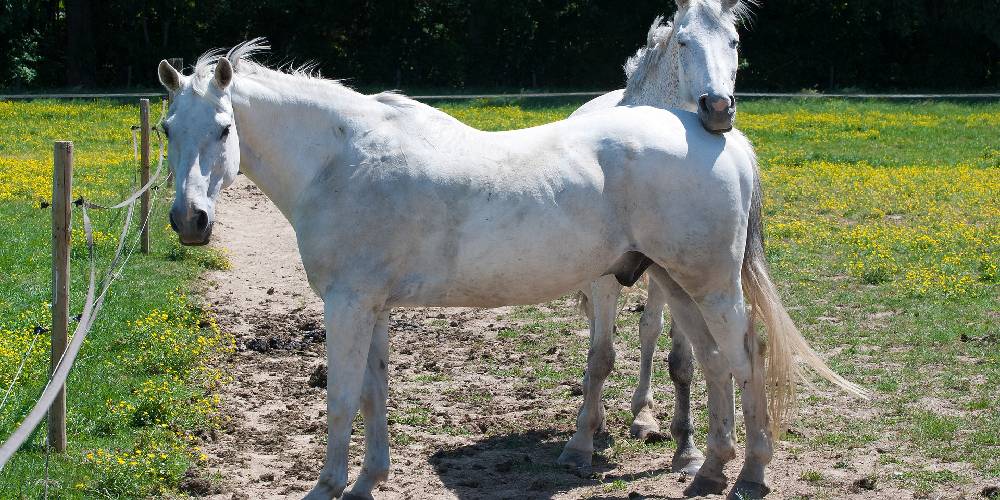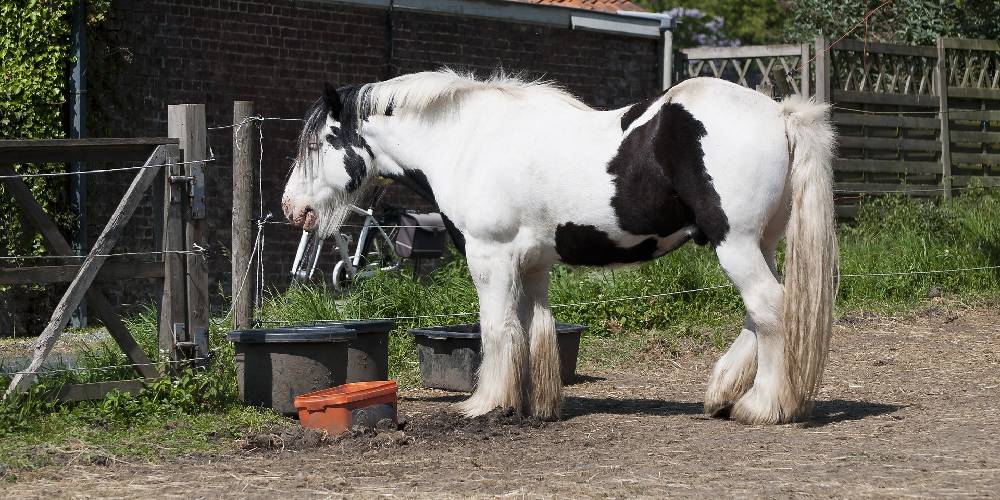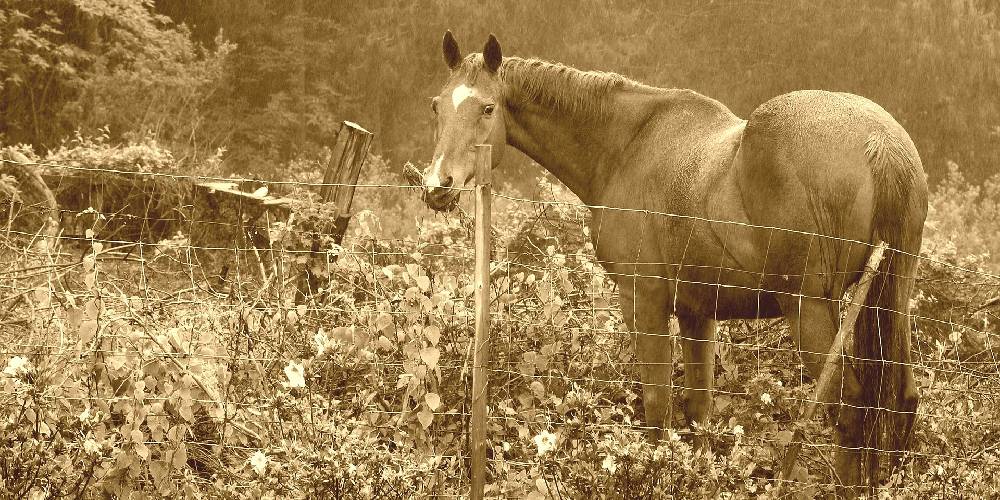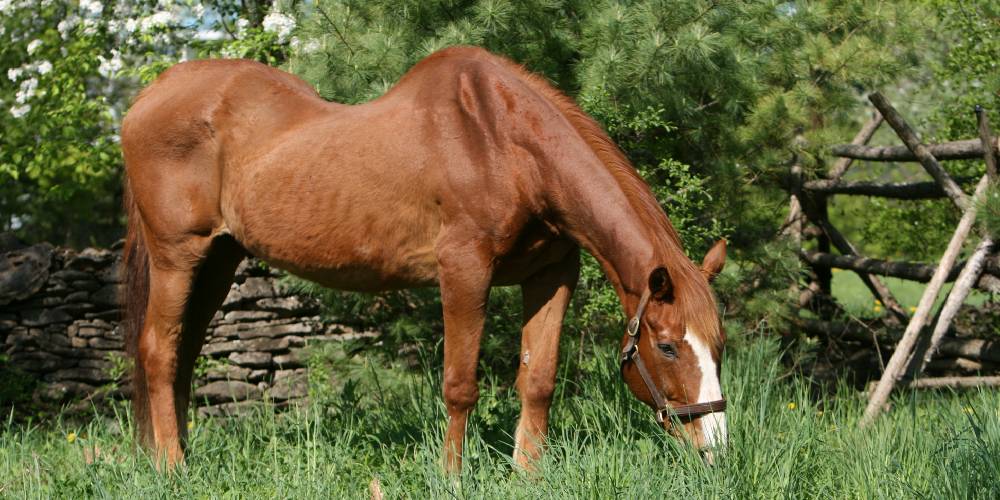Swayback is a fairly common thing to see in horses of all shapes, sizes, and breeds. There are some breeds of horses that are more prone to getting swayback than others. Why is this? What is swayback anyway? Are swaybacked horses still able to be ridden? And at what age are horses most commonly seen with swayback?
What Is Swayback In Horses?
Swayback in horses is a back condition that is most commonly seen in older horses. This condition causes the collapsing of the spine due to a loss in abdominal and back muscles, a loosening of ligaments, or overuse of the horse. Generally, this condition is not painful and the horse can still be used for work, riding, or breeding even with this condition.
Can Swaybacked Horses Still Be Ridden?

It really depends! Horses with a severe case of swayback are better off not being ridden or worked because of the severity of their condition. If a horse’s back is bent low enough, it can even be painful or uncomfortable for them to be ridden.
If a horse has a slightly swayed back, like my Arabian Cross Fiire, they absolutely can still be ridden. Just, when riding a swayback horse, I would make sure their back is cushioned or padded enough so they aren’t uncomfortable during your time riding.
When riding a swayed-back horse, I recommend using a half pad on top of another saddle pad to help pad and cushion their back and make their saddle fit a little bit better. They make some half pads that are designed to be used on swayback or high-withered horses. These work great for giving the horse some extra cushion.
Click here to check out one of my favorite half pads for use on swayback horses!
You can read more about half pads by clicking here!
Are There aother Names For Swayback?
Yes, there are! Some other names for this back condition could include:
- Low back
- Hollow Back
- Lordosis (medical name for swayback)
- Lordotic back
What Breeds Are More Likely To Become Swaybacked?
Almost any horse no matter the breed can become swaybacked at some point or another. Though really any horse can get it, there are some breeds that are more likely to get it than others. The horses that are often seen with swayback include:
- American Saddlebreds
- Arabians
- Saddlebred Crosses
- Arabian Crosses
- Thoroughbreds
- Morgans
- Tennessee Walking Horses
- Any horse that have a longer back
At What Age Will A Horse Start To Become Swaybacked?
Horses can begin to show signs of that low, sagging back at ages as early as 2 years old! Horses can get swaybacked really at any age, it just all depends on their conformation, genetics, job, and level of exercise.
Swayback, though seen here and there in young horses, is mainly a condition seen in horses that fall in the older age group. The most common ages for horses to begin to get swaybacked fall between 15 and 20. Generally, if the horse si showing signs of swayback around this age, then the condition is likely to progress as they age.
Causes For Swayback

Swayback is caused by a number of things. The main things that cause this condition include:
- Weakened abdominal muscles
- Weakened back mucles
- Weakened ligaments in the back
- A longer back in a horse
- Carrying a rider that is too heavy and large for them
- Lack of exercise
- Poor genetics
- Not collecting when being ridden
- Loss of muscle tone overall
- Cushing’s disease
- Carrying too many foals
- Spinal deformity
Is Swayback Painful?
Swayback is not generally a painful condition. The only time that it can be painful for horses is if they are severely swaybacked and are being asked to carry a heavy rider or perform some other task that puts a lot of strain on their backs.
Surprisingly, most swaybacked horses feel no pain or strain at all and can still function and be ridden as a normal healthy horse would.
How To Care For A Swaybacked Horse

Caring for a swaybacked horse to help preserve their backs can be really important. Preventing the condition of these horses from deteriorating can help to keep them happy and comfortable for longer. The things that you can do to help to preserve the condition of these horses include:
- Performing strengthening exercises with the horse
- Engaging the horse’s back and abdominal muscles
- Feeding a supplement that benefits the horse’s topline
- Putting the horse on an exercise regimen

